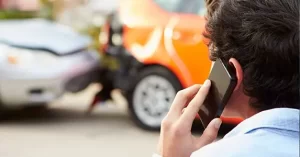Is your child really going to be safe if you are in a car accident
Baby car seats. Something essential for every vehicle that is transporting a child or toddler. Statistics show that having the right car seat for your toddler is the only way that you can make sure that they are safe.
However, there are so many debates that says that a baby seat can also be dangerous for your child. What is the truth and how can we make sure that our young ones are safe when every parent’s worst nightmare happens?
Table of Contents
Shocking statistics about baby car seats

If you are considering driving your child without a baby seat, you need to read about these shocking statistics. This is a wakeup call for those parents that think that their children are fine without one, or who thinks that getting in an accident, is going to be slim.
This could be prevented if parents just purchase high-quality car seats and making sure that children are buckled up. Even when you are in a hurry, or just running up to the store, make sure they are properly restrained.
Children Accident Statistics
In 2021, 711 children under the age of 13 were killed in traffic accidents. 226 were not restrained, and many more were improperly restrained. According to the National Highway Traffic Safety Administration, car seats can reduce fatal injuries in passenger vehicles by as much as 71% for infants younger than one year and 54% for toddlers aged between 1-to-4 years. Infants and toddlers riding in light trucks will experience a reduction of 59% and 58%, respectively.
Correct use of child safety restraint system
The correct use of a child safety restraint system that is appropriate for the child’s size and age can save lives. The National Safety Council’s (NSC) position on child restraints addresses the safety of child passengers in multiple modes. NHTSA offers the following recommendations on the proper selection of child restraints.
Rear-facing car seats
Children under the age of one should always be seated in a car seat that faces rearward.
As long as you can, keep children aged 1 to 3 years in rear-facing car seats. When children reach the weight or height limit of their rear-facing seat, they can ride in a forward-facing with a harness.
NHTSA recommends that children aged 4 to 7 years old use forward facing car seats until reaching the maximum height or weight limits of the manufacturer’s instructions, and then switch to a booster.
Booster seats
Children aged 8 to 12 should be kept in booster chairs until they can fit into seatbelts.
Make sure that all passengers wear their seatbelts correctly. The lap-belt should be placed low on the hips, and the shoulder-belt across the chest. Never put a shoulder strap under your arm or behind you back.
The percent of children who die in accidents while not restrained is higher for all age groups than the percentage of children observed to be unrestrained. In a 2021 national observation survey, for example, no child less than one year old was observed unrestrained. However, 31.0% percent of all child occupants deaths under 1 year were unrestrained.
Installing the car seat correctly
The number one thing that you should know about a child car seat, is that you should install it correctly. Installing it incorrectly can cause it to be loose and the child may be ejected from it when you have an accident. The straps may be lose or not properly secured. In these cases, the car seat was the cause of most of the injuries.
This is why you should make sure that you read the instruction manual and make sure you are installing it correctly. By trying to save time and effort to just install it fast, can mean the difference between life and death for your child or infant.
A few tips on how to install a baby seat correctly
If you’re using a rear-facing seat (which is recommended for infants and young toddlers), position it so that it is reclined at the correct angle. This angle is usually specified in the seat’s manual.
Secure the Seat:
Use either the vehicle’s seat belt or the Lower Anchors and Tethers for Children (LATCH) system to secure the baby seat. Follow the instructions in the manual carefully to ensure proper installation. Make sure the seat is snug and doesn’t move more than an inch in any direction.
Check the Harness:
If the seat has a harness, ensure it is buckled securely and adjust the straps so they are snug around the child. The chest clip should be at armpit level.
Test for Stability:
Once the seat is installed, give it a firm shake at the base. It should not move more than an inch in any direction. If it does, adjust and re-secure it.
Verify Installation:
Many fire stations, police stations, and child safety organizations offer free car seat checks. Consider having a certified technician inspect your installation to ensure it’s done correctly.
Register the Seat:
Register the baby seat with the manufacturer to receive any recall notifications or safety updates.
Replace as Needed:
Baby seats have expiration dates. Replace the seat if it has reached its expiration date or if it has been involved in a moderate to severe crash, even if there is no visible damage.
Always prioritize safety when installing a baby seat, and if you’re unsure about any step, consult the seat’s manual or seek help from a certified technician.
Something else to consider is that if this is an infant or toddler car seat, you should not install it in the front seat. Especially if there are airbags installed in the vehicle. The booster seat might prevent serious injury, but the chances are high that your baby can suffocate with the airbag that is preventing serious injury. Your infant should face backwards on the back seat. This is to ensure that the injuries during a car accident are minimal. Especially, head and neck injuries.
How can you make sure that your child is safe from an accident?
The only way that you can make sure that your child is safe during an accident is to buy a high quality car seat. There is also some other essential information that you should consider:
The seatbelt should be adjusted to fit firmly around the child.
There should be no way that your child can be thrown out of the seat or the car during an accident. You might think that this can be uncomfortable for your child, but this might mean the difference between life and death.
Don’t buy a baby car seat second hand
Not even if you don’t have the money for a new one. You won’t know if it was in an accident before and got damaged. If it is cheap it may not keep your child safe during an accident. Make sure that you are investing in purchasing a high-quality seat. Secondhand and cheap might not save your child’s life at the end of the day.
Don’t think that the moment that your child is too big for the baby seat.
Children who are of age or weight can be restrained with normal lap or shoulder belts. This might assist with the child being restrained in the car during an accident. If the seatbelt comes to high on the child’s neck, the force of the accident could cut through the neck. It’s Possible that the belt could cause serious neck injuries. A booster seat might be necessary to reduce this risk of injury if you don’t want to use a car seat anymore.
Children who are of age so they don’t have to use a child seat various from state to state. In a lot of states, they don’t go by age anymore, they go by weight.
Replacing the baby seat after a car accident
Do you need to replace the car seat after an accident or not? This is a question that many parents are asking after an accident. Most people think that the seat isn’t damaged unless they see visible damage. There are a couple of things to look for, in order to know if you should replace it or not. In the past it was always replaced no matter what the condition. The NHTSA has changed their opinion on this. The reason is to save the consumer and the insurance company money.
- Was there anyone hurt during the accident? If the answer is yes, then there is a huge chance that it might be damaged. Replacing will be necessary.
- Where was the car damaged in the accident? Was it on the side where the child’s seat is installed? Or, was the child in the seat injured? Then replacing it is essential.
- When you see that there is any damage done to the child’s seat, you should replace it immediately. No matter if it was a minor accident or not.
The recommendation of the NHTSA is not to replace unless it was major accident or it shows signs of visible damage. You, as the parent of your child are responsible for there safety. If you feel it should be replaced after an auto accident, then do it. Buy the best car seat you can afford. You are carrying precious cargo, and you want to protect them.
Is it really safer for a young child or infant to be strapped into a car seat? Or, is the normal seatbelt a better choice? This information is showing you the risks that you are taking when you don’t use a quality car seat. The statistics are proof that having a car seat installed correctly in the car, and the baby strapped securely in the seat, the risk of injury is reduced.
We all love our children, please make sure that they are safe when you are traveling by car. Even, if you are just running up to the store right down the road. Most accidents happen very close to your house.





 Since 2012, Accident Doctor has been dedicated to connecting personal injury patients and attorneys with qualified physicians who specialize in treating accident-related injuries. Our nationwide network includes experienced medical professionals who provide care for individuals involved in car accidents, motorcycle accidents, truck and tractor-trailer collisions, slip and fall incidents, and workers’ compensation cases.
Since 2012, Accident Doctor has been dedicated to connecting personal injury patients and attorneys with qualified physicians who specialize in treating accident-related injuries. Our nationwide network includes experienced medical professionals who provide care for individuals involved in car accidents, motorcycle accidents, truck and tractor-trailer collisions, slip and fall incidents, and workers’ compensation cases.